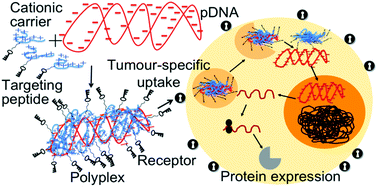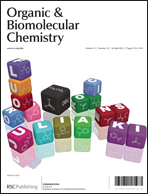Solid-phase-assisted synthesis of targeting peptide–PEG–oligo(ethane amino)amides for receptor-mediated gene delivery†
Abstract
In the forthcoming era of cancer gene therapy, efforts will be devoted to the development of new efficient and non-toxic gene delivery vectors. In this regard, the use of Fmoc/Boc-protected oligo(ethane amino)acids as building blocks for solid-phase-supported


 Please wait while we load your content...
Please wait while we load your content...